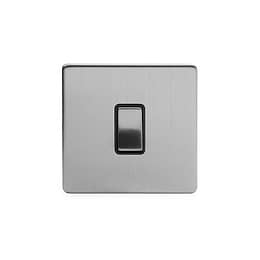Types of Switches: A Guide
Types of Switches: A Guide

The demands of today’s residential and commercial applications call for a huge variety of different types of switches that cater to wide variety of purposes, from complex lighting systems to the integration of smart technology. With functions varying from simple lighting setups to powering heavy duty appliances, choosing the right switch for your project is key.
In this guide, we have outlined the key phrases to look for when buying a switch. We will highlight just what these types of switches are designed for so that you can make an informed decision when planning your lighting setup, and to ensure your home is powered as effectively as possible.
One-Way Switch
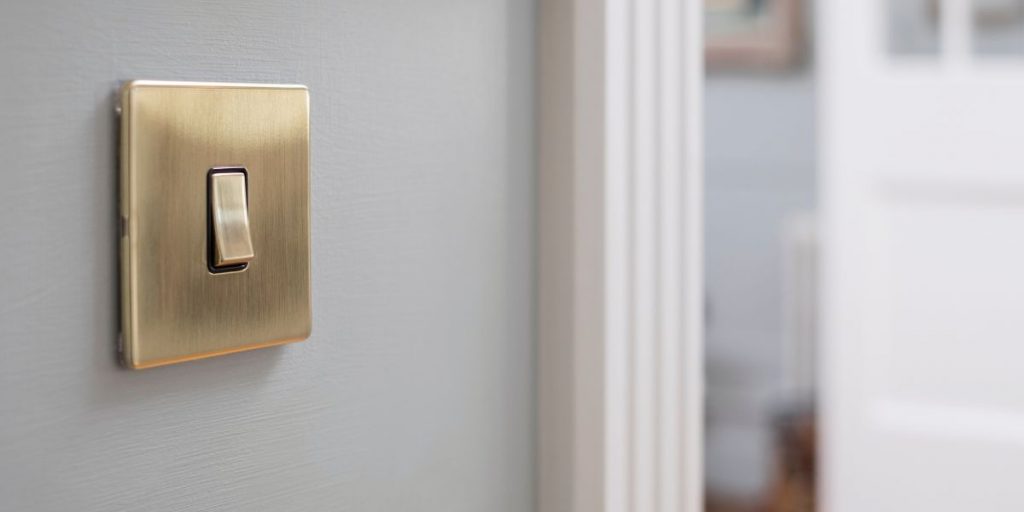
A one-way switch controls one light system from just one location. This simple switch is often used in rooms with one single entry point. Alternatively, for switching on appliances such as ceiling fans.
One-way switches are not as common as they once were, being phased out for the much more versatile two-way switch. The two-way switch can be used in place of a one-way switch. This allows for more versatility in the event that you need to add a second switch to your circuit.
Two-Way Switch
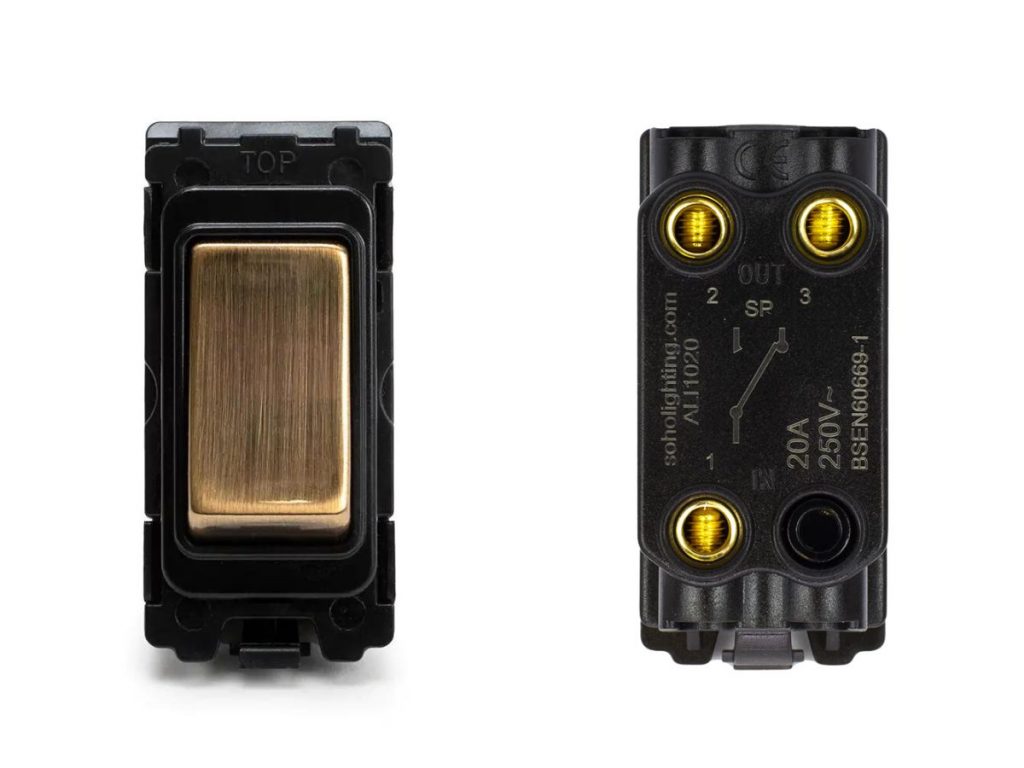
Two-way switches are designed for controlling a single light system or ceiling fan from two separate locations. Placing the switches at either end of the corridor would allow you to switch on the light from either end.
This saves you the trouble of having to walk through the darkness to find your switch. This type of switch is a popular choice for spaces with two entryways.
Intermediate Switch
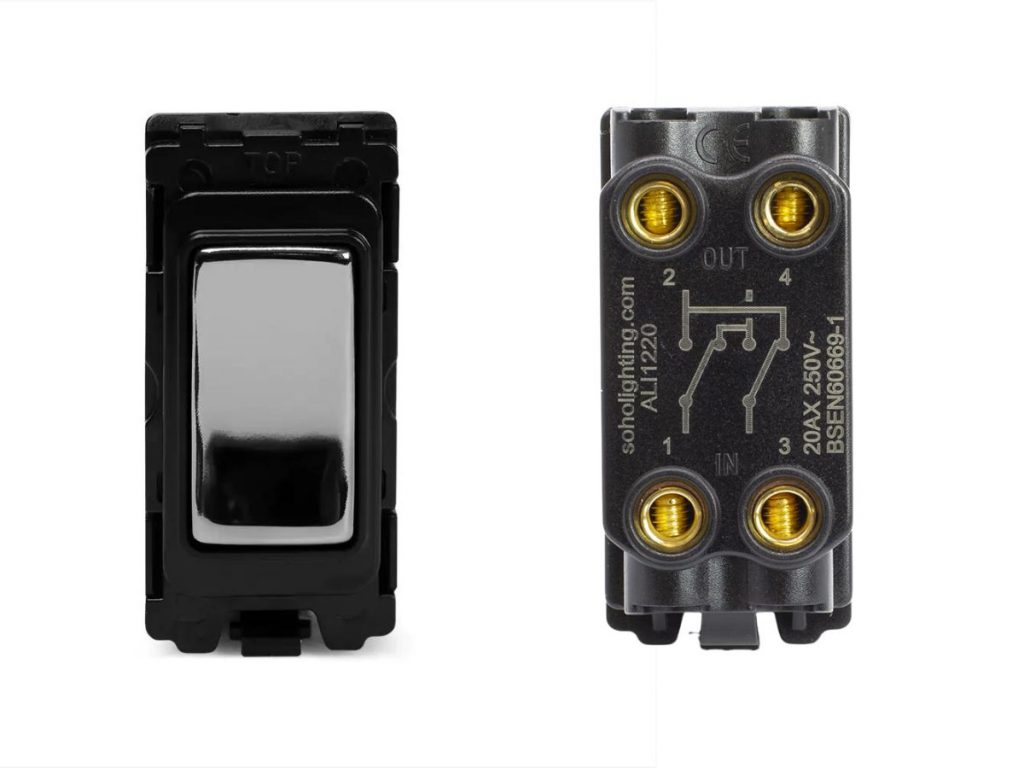
Also known as a three-way switch, an intermediate switch is used to control lighting systems from more than two locations. An intermediate switch provides much more flexibility in larger rooms, complex spaces, or rooms that have multiple entry points. It allows you to move through the space without returning to just one switch location.
This is achieved by installing one or more intermediate switches in between 2 two-way switches. This depends on how many switch points are required.
Momentary Switch

Unlike traditional switches that the user switches on and off at will, a momentary switch only remains in the on position for as long as it is pressed. This type of switch is used most commonly in applications such as doorbells, garage door openers, though they can occasionally be used in lighting systems.
These are usually called retractive switches, and can be retractive rocker or retractive toggle switches.
Dimmer Switch

Dimmer switches allow the user to adjust the brightness of a light fixture, offering task lighting or ambience. While older models of dimmer switches could only be used from one location, newer designs allow you to use dimmers from multiple points, much the same way as a two-way switch.
Dimmer switches are great for energy efficiency, as dimmer lights use much less power than a brighter light.
Single Pole Switch
A single pole switch is the most common type used in domestic properties, and controls lower powered items around the home such as light fixtures.
This type of switch is typically used in one-way, two-way, and intermediate switches, and features a simple on/off mechanism that isolates only the live circuit. This switches the light on and off without isolating the neutral.
Double Pole Switch
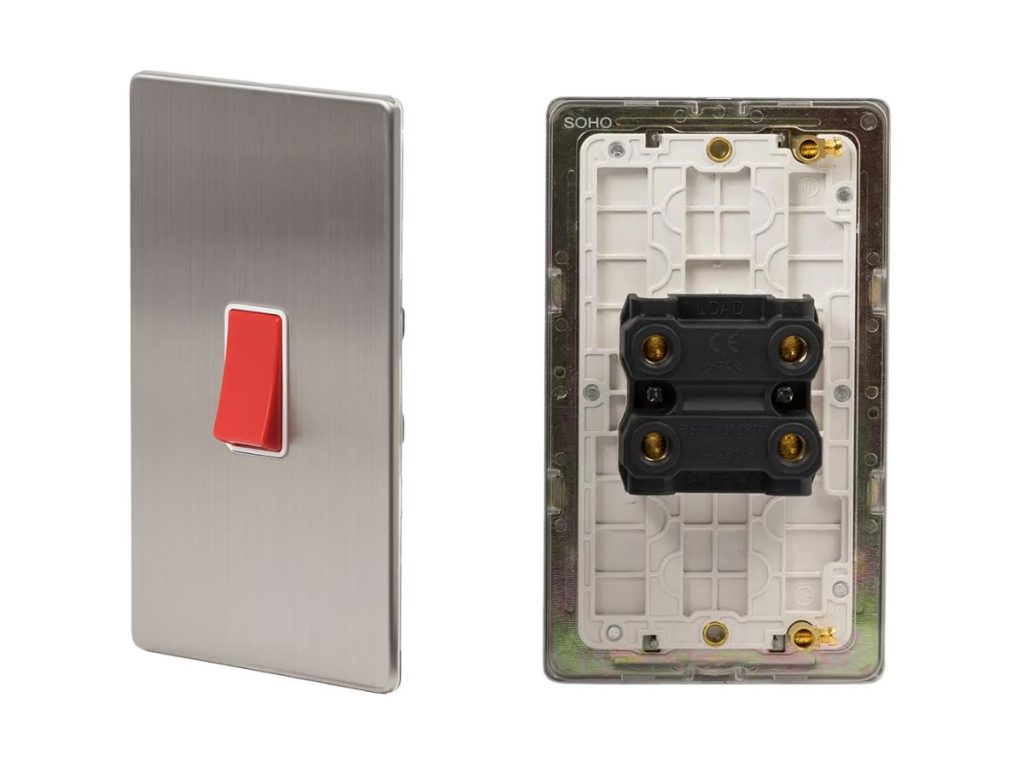
A double pole switch isolates both the live and the neutral circuit. This type of switch is designed for use with larger appliances such as ovens and water heaters and makes it much safer to turn these appliances on and off.
Be sure to check the rating of your appliance, as there are various types of double pole switches. A 20A double pole switch is likely to be only suitable for small ovens, whereas regular ovens are likely to need a 45A double pole switch.
Triple Pole Switch
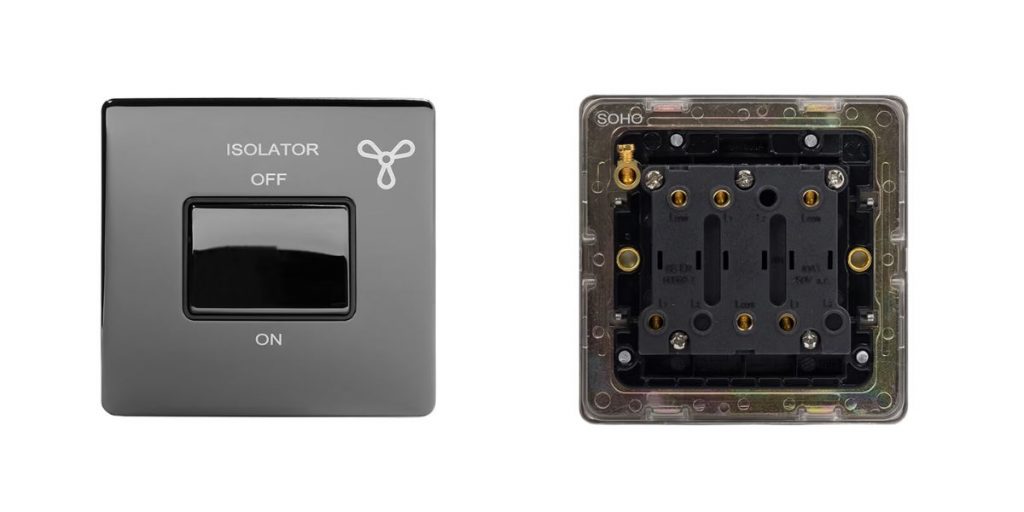
Triple pole switches are more commonly used in commercial and industrial requiring complex control configurations. They work by isolating two live cables (the permanent live cable and the switch cable), and a neutral all at once.
These are not commonly installed in commercial properties, with the exception of fan isolators which do use triple pole switches.
[related_products is_auto_added="1"]


